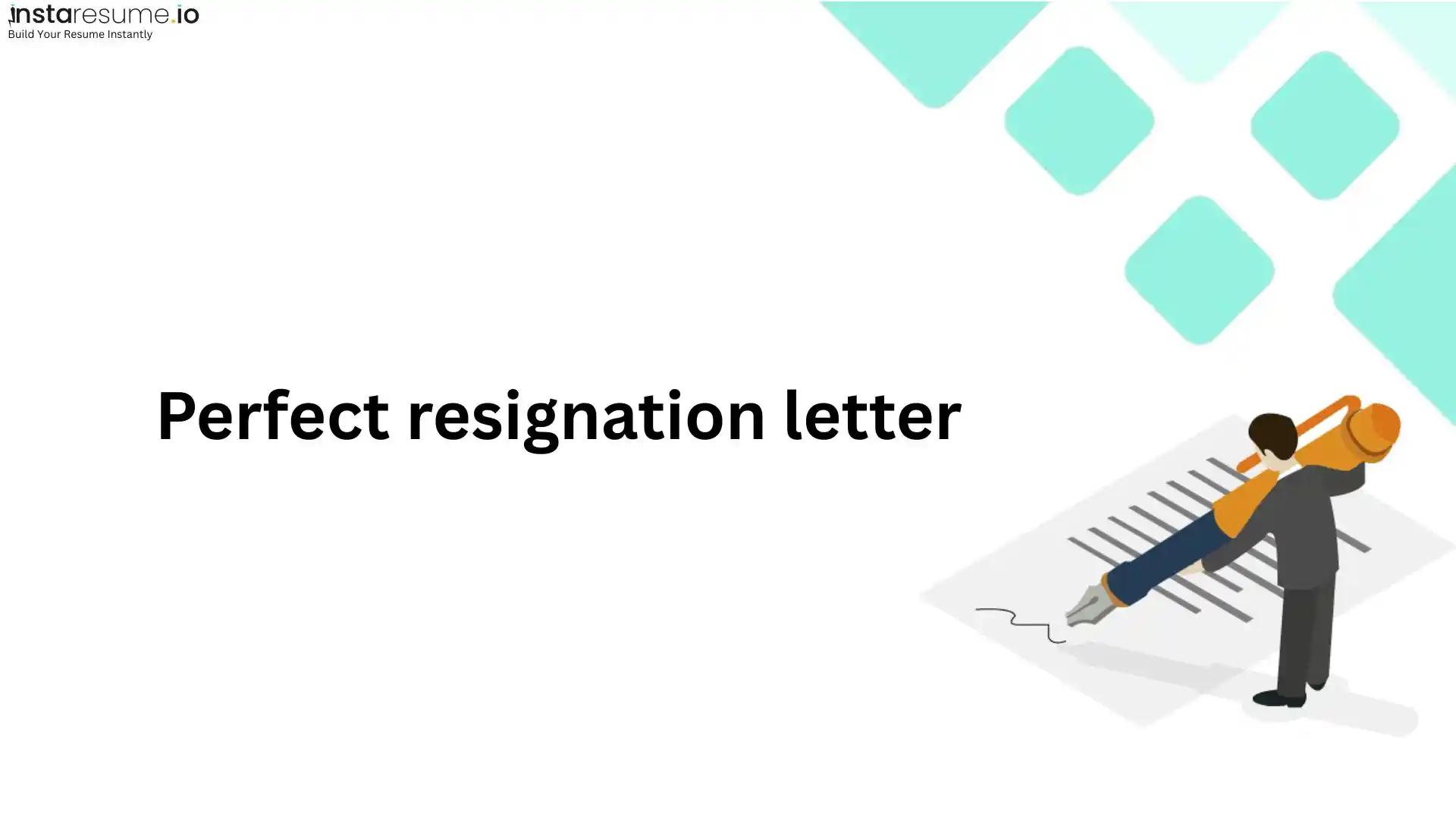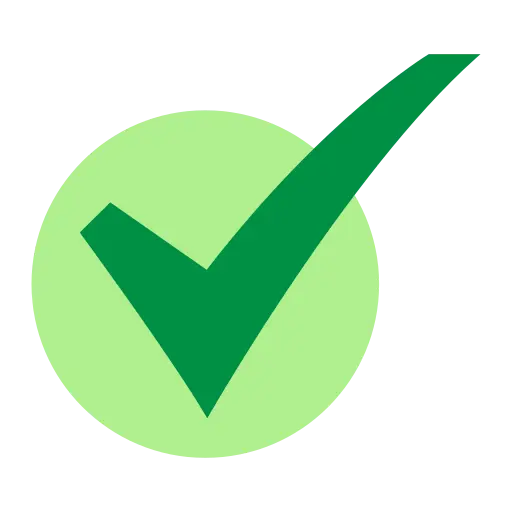The Perfect Resignation Letter
Trust Score: 4.8
353 reviews

Table of Contents
Resigning from a job can be an emotional process, but writing a perfect resignation letter can leave a lasting impression—one that keeps doors open for future opportunities. Whether you're switching industries, relocating, or seeking better work-life balance, your resignation letter is your formal goodbye. And like every exit, how you leave matters just as much as how you started.
This blog will walk you through exactly what makes a resignation letter “perfect”—from tone and structure to examples and must-follow etiquette. We’ll also cover common mistakes, dos and don’ts, and powerful templates that make it easy to craft a graceful exit.
Essential Elements of the Perfect Resignation Letter
Here are the must-have components every perfect resignation letter should include:
 Professional Header
Professional Header
Include your name, job title, contact information, date, and the employer’s details. Formal Salutation
Formal Salutation
Address your manager by name using "Dear [Manager's Name]". Clear Statement of Resignation
Clear Statement of Resignation
Example: “I am writing to formally resign from my position as [Job Title] at [Company Name], effective [Last Working Day].” Notice Period Acknowledgment
Notice Period Acknowledgment
Mention that you're providing two weeks' notice (or the required period) as per company policy. Optional Reason (Keep it Brief)
Optional Reason (Keep it Brief)
Only if you wish—use neutral or positive framing like “for personal growth” or “a new opportunity.” Gratitude Statement
Gratitude Statement
Thank your employer or team for the opportunity, even briefly. Transition Support Offer
Transition Support Offer
Express your willingness to help during the handover or train your replacement. Professional Closing
Professional Closing
Use formal closings like “Sincerely” or “Best regards” followed by your full name.
Examples
Example 1: The Perfect Resignation Letter (Simple Format)
Dear [Manager’s Name],
I am writing to formally resign from my role as [Job Title] at [Company Name], with my last working day being [Date].
I appreciate the opportunities for growth and development I’ve experienced during my time here. Thank you for your support and guidance.
I am committed to making the transition as smooth as possible. Please let me know how I can assist during the handover period.
Wishing you and the team continued success.
Sincerely,
[Your Full Name]
Example 2: Perfect Resignation Letter for Personal Reasons
Dear [Manager’s Name],
Please accept this letter as formal notice of my resignation from [Company Name], effective [Date]. Due to personal circumstances, I have decided to step down from my role as [Job Title].
Working here has been a valuable experience, and I’m truly thankful for the opportunities I’ve had.
I’ll do my best to support the transition and ensure all responsibilities are handed over smoothly.
Sincerely,
[Your Name]
Common Mistakes to Avoid in a Resignation Letter
Even good employees sometimes get this wrong. Here’s what to avoid:
 Being vague or unclear about your resignation date
Being vague or unclear about your resignation date Sounding emotional or angry (venting can backfire)
Sounding emotional or angry (venting can backfire) Over-explaining your reason for leaving
Over-explaining your reason for leaving Being too casual or overly informal
Being too casual or overly informal Criticizing the company or leadership
Criticizing the company or leadership Failing to express any appreciation
Failing to express any appreciation Leaving out an offer to help with the transition
Leaving out an offer to help with the transition
Avoiding these will help you exit with dignity and professionalism—exactly what a perfect resignation letter achieves.
Do’s and Don’ts When Writing the Perfect Resignation Letter
Do’s:
 Use a professional tone—even if you're leaving on bad terms.
Use a professional tone—even if you're leaving on bad terms. Be clear and concise—get to the point in 1–2 short paragraphs.
Be clear and concise—get to the point in 1–2 short paragraphs. Mention your last working day—this avoids confusion.
Mention your last working day—this avoids confusion. Proofread before sending—typos in your final impression don’t look good.
Proofread before sending—typos in your final impression don’t look good. Keep a copy of your letter—both for records and legal safety.
Keep a copy of your letter—both for records and legal safety.
Don’ts:
 Don’t air grievances or badmouth colleagues.
Don’t air grievances or badmouth colleagues. Don’t be sarcastic or emotional.
Don’t be sarcastic or emotional. Don’t delay sending it after verbally resigning.
Don’t delay sending it after verbally resigning. Don’t forget to date the letter—this helps HR plan accordingly.
Don’t forget to date the letter—this helps HR plan accordingly.
Final Tips for Writing a Flawless Resignation Letter
 Keep it short and respectful. A resignation letter isn’t the place for storytelling.
Keep it short and respectful. A resignation letter isn’t the place for storytelling. Personalize it. Mention your team, project, or company highlights where appropriate.
Personalize it. Mention your team, project, or company highlights where appropriate. Send it formally. Even if it’s via email, use a PDF format with proper formatting.
Send it formally. Even if it’s via email, use a PDF format with proper formatting. Follow up. Once you send the letter, discuss it in person if possible—this maintains good professional etiquette.
Follow up. Once you send the letter, discuss it in person if possible—this maintains good professional etiquette.
And remember: no matter your reason for leaving, aim to exit gracefully. Your resignation letter is part of your professional legacy.
Conclusion: Your Lasting Impression Starts Here
The perfect resignation letter isn’t just a formality—it’s a reflection of your professionalism, maturity, and class. Whether you’re moving to a dream job, taking a break, or simply making a career pivot, how you communicate your exit can influence your references, your network, and your reputation in the long run.
Take the time to craft it thoughtfully. Use templates for structure but personalize your message. Show gratitude. Be direct but kind. That’s the formula for a resignation letter that truly stands out—and helps you leave on the best possible terms.
FAQs About the Perfect Resignation Letter
What should I include in a perfect resignation letter?
A perfect resignation letter should include your intent to resign, your last working day, a short thank-you note, and a polite offer to assist during the transition. Keep the tone respectful and professional.
Do I need to give a reason for resigning in the letter?
No, it's not mandatory. If you choose to mention a reason, keep it brief and neutral. For example, you can say you're resigning for personal growth or family commitments.
How long should a resignation letter be?
Ideally, your resignation letter should be one paragraph to a half-page. It should be long enough to communicate your message clearly but concise enough to be read quickly.
Is it okay to email my resignation letter?
Yes, emailing your resignation letter is perfectly acceptable, especially in modern workplaces. Just make sure it’s addressed properly and professionally formatted—ideally as a PDF attachment.
Can I take back my resignation after submitting the letter?
It depends on your employer. Some companies may allow you to withdraw your resignation if it’s early in the process. Communicate quickly and respectfully if you change your mind.
Should I criticize my employer or coworkers in the letter?
No. A resignation letter isn’t the place to vent. Keep it professional, even if you're leaving on bad terms. Burning bridges never helps your career.
When is the best time to submit a resignation letter?
Submit your resignation after you've had a conversation with your manager, ideally at the beginning of the workweek. Always give at least two weeks’ notice unless your contract states otherwise.
Is it necessary to give a printed copy of the letter?
If you're resigning in person, a printed letter adds formality. But in remote or hybrid environments, an emailed letter is more than enough. Always confirm receipt if you send it digitally.
Should I offer to help during the transition?
Yes, it shows professionalism. Offering to train your replacement or wrap up projects demonstrates goodwill and leaves a positive impression.
Can I use a resignation letter template?
Absolutely. Using a resignation letter template can save time and ensure professionalism. Just be sure to customize it so it reflects your specific role, employer, and reasons for leaving.






